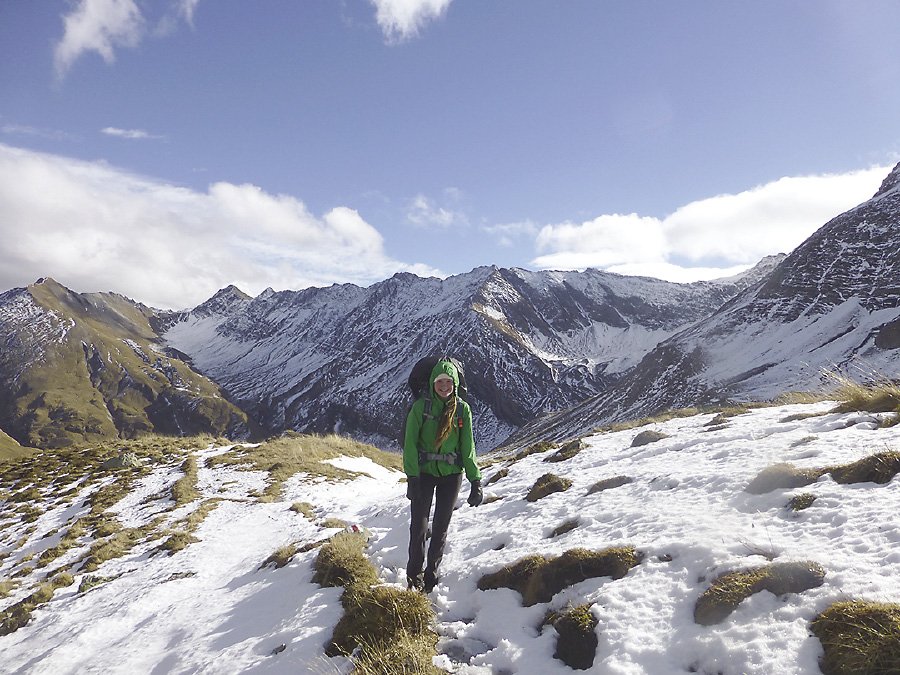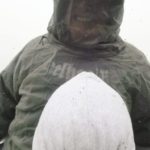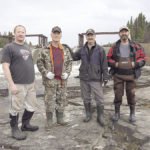It was late October, and my husband Stephen and I sat in a small room with the entire contents of our packs strewn about us. We were in the middle of a five-month backpacking trip through Europe, and had just landed in eastern Switzerland to prepare for what would soon become the highlight of our entire journey. For 10 days we would leave behind cities, train schedules, and showers and exchange them for hiking and camping in the Swiss Alps.
Switzerland’s Alpine Pass route—or the Via Alpina as it’s known locally—is one of the many long-distance trails that criss-cross Europe. It begins in Sargans, on the eastern border, and runs for over 200 miles and across 16 mountain passes before ending at the shores of Lake Geneva in the west of Switzerland. We’d read about this trail, and seen the pictures, and the more we learned about it, the more we knew that we had to go.
Now here’s the problem: I’m not really a mountain climber. I’m a hiker, sure, but the Alps was new territory. So after getting dropped off to begin our hike in Weistannen, with nothing but a backpack and the mountains looming ahead, those idyllic pictures faded from my mind and I felt a little intimidated. What happened if we encountered a snowstorm? Blew an ankle? Got sick miles from the nearest village? We were either highly determined or slightly foolish attempting this trail so late in the season. Probably both.
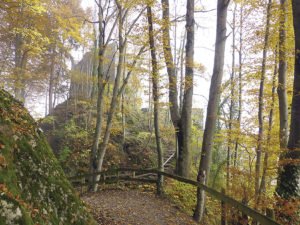
Some hikers we’d met in Sargans had estimated that we could hike from Weistannen and over the first pass to the next village before nightfall. But as the sun crept away from the mountain faces and we were only halfway up the first pass, we realized that time estimates given by Swiss mountain enthusiasts don’t necessarily apply to Midwestern newbies. And so we pitched our tent before we got to the snow line, and planned to hike over Foo Pass and down into the next village, Elm, the following day.
The first night was cold and windy. Many hikers on the Alpine Pass route choose to stay in mountain huts, little inns that dot the trail and provide travelers with a bunk bed and a resupply of food and water. Stephen and I always preferred camping when we could, especially in an area so beautiful and a country as expensive as Switzerland. Being the highly determined and slightly foolish people that we are, we wanted the real experience, windy nights and chilly temperatures and all.
The next morning, we awoke to a sweeping valley glowing in the morning sun, with nothing but dense forests and regal mountains surrounding us. The first half of that day was a steady climb up. We hit snow, and had to pull out our map and compass to follow the now-invisible trail. At several points we thought we were almost there, only to round a bend that unveiled a whole lot more mountain ahead. But eventually, the actual top of the pass came into sight, and as we made it to the highest point, the sight of miles and miles of mountains made the climb worth it. I think we actually screamed with excitement, and pulled out a Toblerone to celebrate.
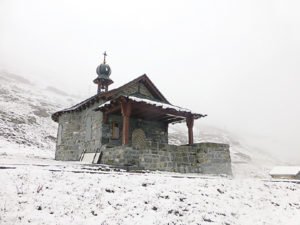
With the completion of our first mountain pass, my initial reservations began to wear off, and the calm that comes from extended times in the wilderness took over. We settled into a familiar rhythm of hiking, setting up camp, and tearing down camp. The smell of woodsmoke from distant cabins marked each frosty morning, and we refilled our water bottles at lunchtimes from clear, cold mountain streams. With each passing mile, being on the trail began to feel normal, and the fast-paced world we’d left behind seemed a distant dream.
A few days into our trip, we began to notice the latticework of cable cars that crossed the mountainsides. Some resembled a typical chair lift at a ski resort, while others looked distinctly homemade, and a few downright terrifying. As the day wore on, we realized we were approaching a public cable car not too far from the trail, one that could save us an entire hour of hiking time. This one didn’t look to be of the terrifying variety, so we decided to take it.
A little shed stood where passengers could get on or off, and a long list of instructions in Swiss German lined the wall. Stephen pushed the button on the wall. Nothing moved.
“How are we supposed to work this?” I wondered.
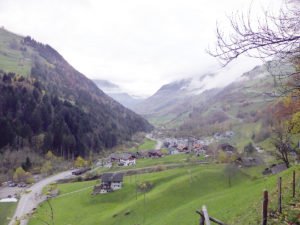
But just then, the lift began to move, and up the mountain came a car with five children inside. All of them wore school backpacks. As they clambered out of the car, we asked them how to work the lift. We understood just enough of each other to make out that we needed a token.
“How do we buy a token?” Stephen asked, pulling some francs out of his pocket.
“We’ll get them!” said the oldest, and taking a couple of francs, ran off.
Stephen and I blinked at each other. “Did they just steal…”
But a few moments later, the children returned with two tokens in hand. They pointed to a slot in the wall, said goodbye, and left. We loaded our backpacks into the storage area at the front of the car. Stephen put in a token, and this time the button on the wall lit up. I got in the car, and held the door open while Stephen pushed the button. Nothing happened.
“We’re still doing something wrong,” I sighed, and got out to take a look. The door slid shut behind me, and as soon as it did the motor began to run. “The door! We need to have the door closed while we start it!”
I jumped back in the car and closed the door. Stephen pushed the button on the wall again, and sure enough, this time it began to move. With only me in the car.
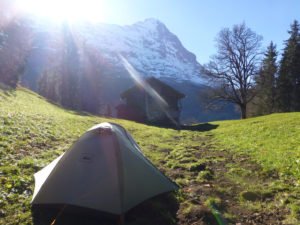
“Hurry!” I shouted, but Stephen was already running, and just before the ground dropped he leaped into the luggage rack, landing on top of our backpacks as we began the descent down the hill.
I’m still grateful those kids showed up when they did, since for most of our hike we were the only people around. The Alpine Pass route in late October and early November was by far the quietest trail I’ve ever been on. The solitude grew on us, and we passed on the chance to stay at a campground with showers near Grindelwald on the grounds of it being “too crowded.” Once we’d tasted that silence, it was difficult to think of going back.
The Alpine Pass route brought us past snow-capped mountains, ruined castles, jaw-dropping waterfalls, and pristine lakes. It also helped us cross some profound accomplishments off our bucket lists, like sleeping in a barn, eating 10 bars of chocolate in 10 days, and getting yelled at by a goat standing on someone’s roof. But most of all, the trail filled us with a new respect for wild and lonely places, and the sense of fulfillment that comes from completing a challenge you once doubted you could do. And almost no sooner had we arrived at the shores of Lake Geneva and stumbled into our B&B than we decided, determinedly, that someday we needed to do it all again.


